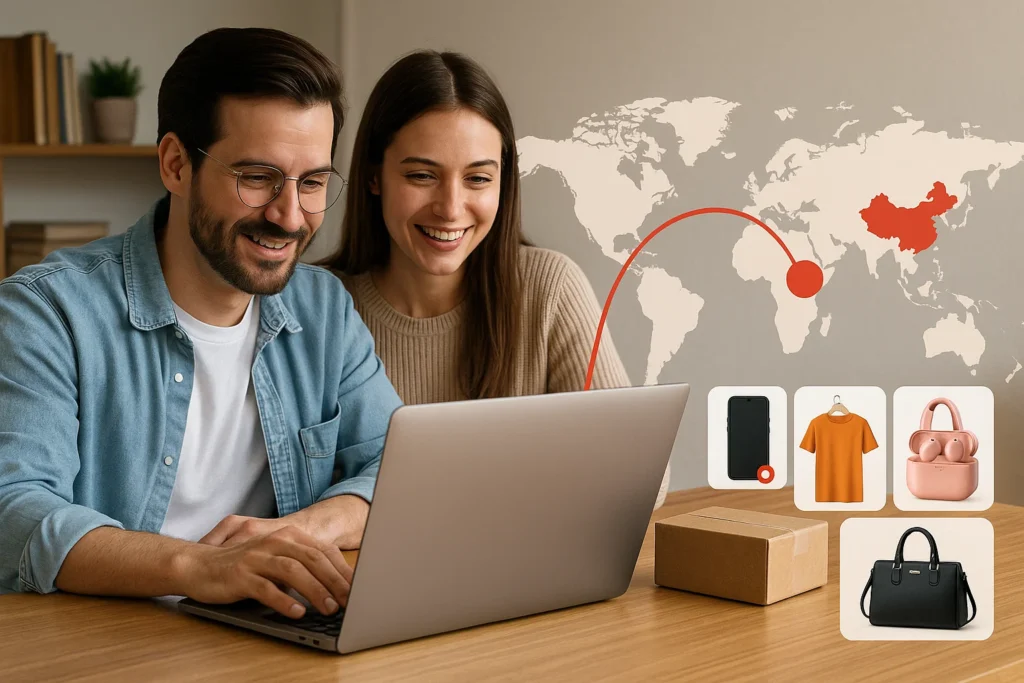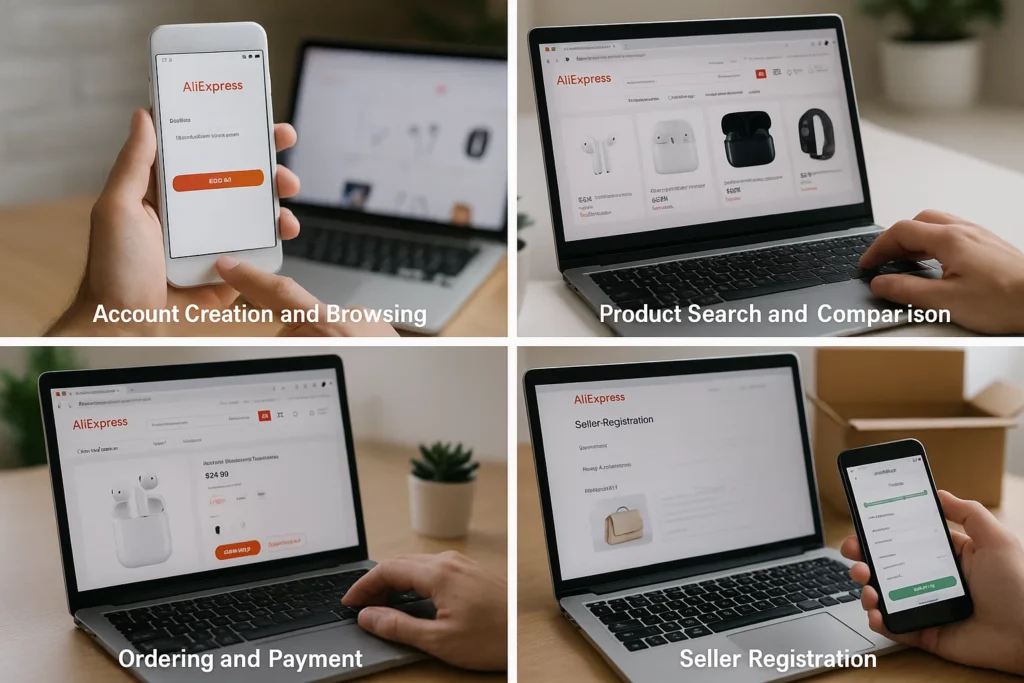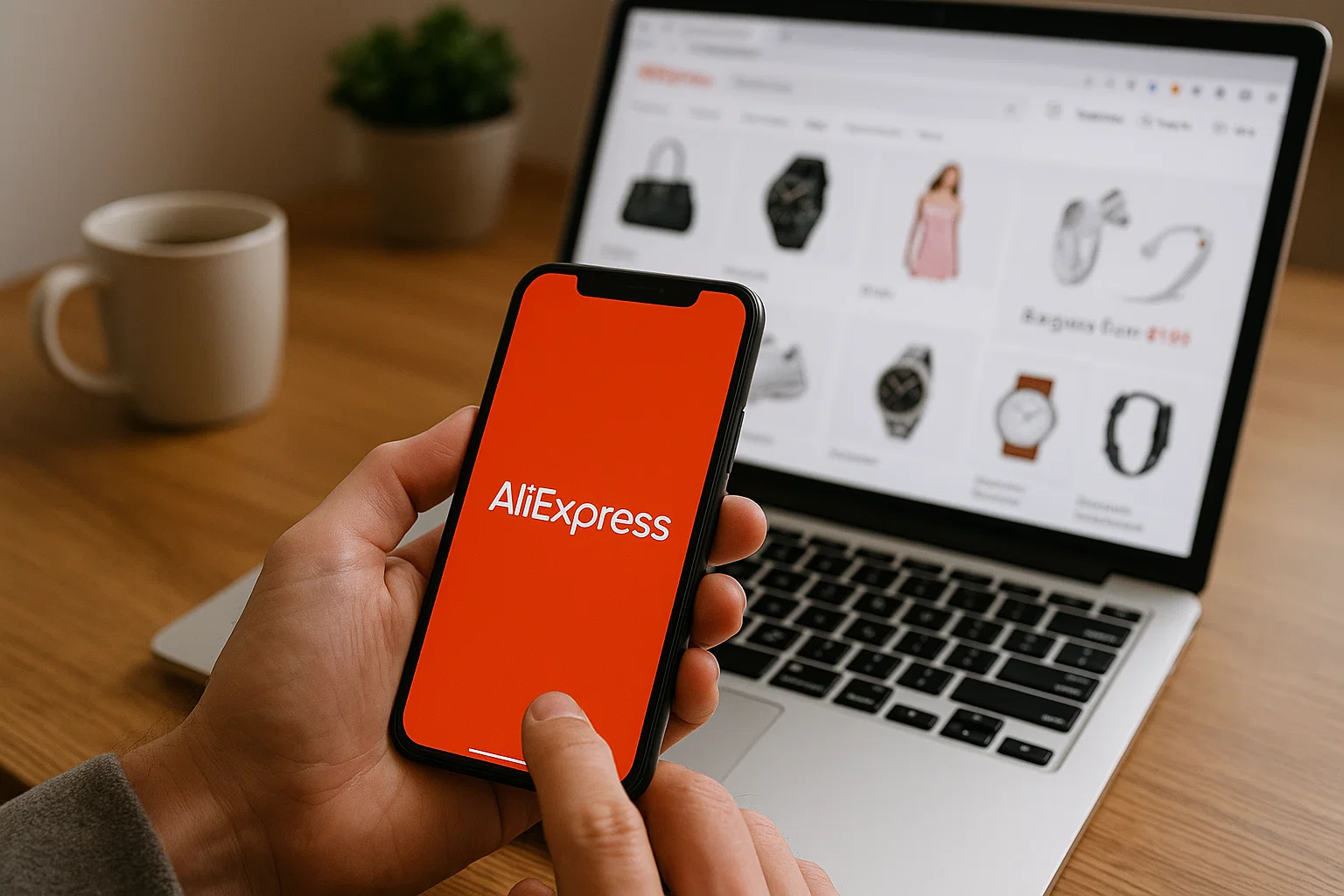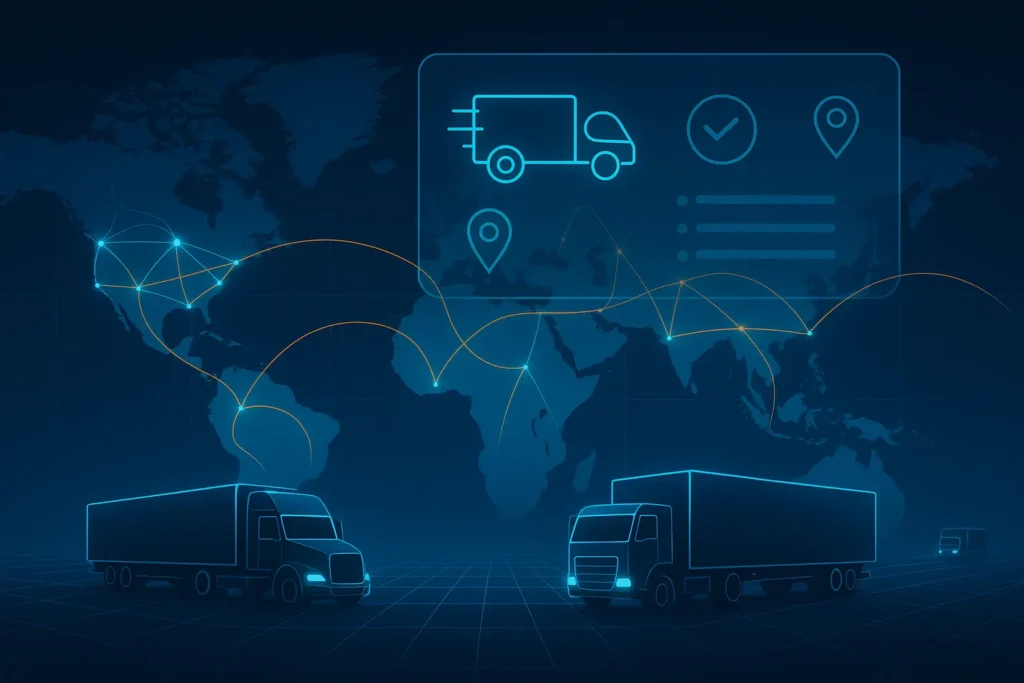AliExpress began with a simple mission: to make global trade accessible to everyone. Imagine a shopper in India buying directly from a Chinese manufacturer, or a small U.S. retailer ordering gadgets straight from suppliers in Shenzhen. That’s the convenience AliExpress brought to the world — instant access to millions of affordable products shipped across continents.
Launched in 2010 by Alibaba Group, AliExpress revolutionized international e-commerce by connecting buyers directly with global sellers through a secure online platform. Over the years, it’s evolved from a B2C site into a massive ecosystem serving millions of buyers and merchants in more than 220 countries.
By 2025, AliExpress stands as one of the most visited online marketplaces in the world, offering products across every category imaginable — from fashion and electronics to home goods and digital services. With advanced logistics, localized payments, and AI-driven personalization, it’s become a one-stop global marketplace for both consumers and small businesses.
By the end of this guide, you’ll understand what AliExpress is, how it works, how it makes money, and how entrepreneurs can create similar e-commerce platforms using Miracuves’ ready-made clone solutions.
Build a powerful multi-vendor e-commerce app engineered for growth, speed, and success — powered by Miracuves, the Leading E-Commerce App Development Company Trusted Worldwide.
What is AliExpress? The Simple Explanation
AliExpress is a global online marketplace that connects consumers directly with manufacturers and sellers, mainly from China, allowing anyone to buy products at wholesale prices without needing a business license. It functions as a bridge between global shoppers and small to medium-sized suppliers who list their items for international sale.

The platform solves a key problem in global trade — accessibility. Before AliExpress, sourcing products from overseas suppliers was complicated and required bulk orders or business relationships. AliExpress made it easy for individuals and small retailers to purchase single items directly from factories, often at prices far below traditional retail.
Its target users include everyday consumers looking for affordable products, dropshippers sourcing inventory for online stores, and small business owners testing products before bulk purchasing. The platform’s most popular categories include electronics, fashion, beauty, home goods, and accessories.
As of 2025, AliExpress serves more than 200 million active users across 220+ regions. It features millions of listings and thousands of verified sellers who offer international shipping through the AliExpress Standard Shipping network. The platform ranks among the top 10 global e-commerce sites in both web traffic and app usage.
AliExpress became successful by simplifying cross-border commerce. It combined low pricing, buyer protection, and an enormous product catalog with convenient logistics and payments. Its slogan, “Smarter Shopping, Better Living,” reflects the experience it delivers — affordable access to anything, anywhere.
How Does AliExpress Work? Step-by-Step Breakdown
AliExpress operates as a global online marketplace connecting buyers with independent sellers. It doesn’t own inventory itself — instead, it provides the technology, payment systems, and logistics network to enable smooth cross-border transactions.

For Shoppers
- Account Creation and Browsing
Users sign up through the website or app, select their country, and start browsing categories or searching products. The platform shows localized prices, currencies, and shipping options. - Product Search and Comparison
Shoppers can filter by price, rating, shipping method, and seller location. AI recommendations highlight trending and relevant products based on browsing history. - Ordering and Payment
Once a product is chosen, users can add it to their cart or buy instantly. Payments are processed securely through Alipay or other integrated gateways. The system holds funds in escrow until the buyer confirms delivery, ensuring safety for both parties. - Shipping and Delivery
Sellers use logistics partners like Cainiao and AliExpress Standard Shipping to deliver products worldwide. Delivery times vary from 7 to 30 days, depending on the destination. Tracking is available directly in the app. - Reviews and Support
After receiving an item, buyers can rate the seller, share photos, and leave reviews. Disputes are managed through the platform’s buyer protection program, guaranteeing refunds or replacements for undelivered or defective goods.
For Sellers
- Seller Registration
Merchants register on AliExpress, list their products with descriptions, photos, and pricing, and select shipping options. - Order Management
Once an order is received, the seller confirms it, packages the item, and ships it through integrated courier services. - Payments
Funds are released to sellers after successful delivery confirmation from the buyer. - Analytics and Marketing
Sellers get access to dashboards showing sales trends, traffic, and conversion data. They can also run paid promotions to boost visibility in search results.
Technical Overview (Simplified)
AliExpress functions as a two-sided e-commerce marketplace built on Alibaba Cloud infrastructure. It uses AI for recommendation and fraud detection, Elasticsearch for search optimization, and CDN caching to serve millions of global users simultaneously.
AliExpress’s Business Model Explained
AliExpress follows a commission-based marketplace model similar to Amazon and eBay but focuses primarily on cross-border transactions. It connects manufacturers and sellers directly with buyers, taking a small percentage from each sale rather than maintaining its own inventory.
Revenue Streams
Transaction Commissions
AliExpress earns a commission from every sale made on the platform. The rate usually ranges from 5% to 8%, depending on the product category and region.
Advertising and Promotions
Sellers can pay to promote their listings through sponsored ads and display placements. This pay-per-click model helps boost visibility within search results and category pages.
Service and Transaction Fees
A small handling fee is charged on payments processed through Alipay and third-party payment systems.
Cross-Border Logistics and Fulfillment
AliExpress monetizes its shipping infrastructure by providing sellers with discounted rates through its logistics arm, Cainiao. This creates an additional revenue stream from delivery and packaging services.
Membership and Seller Services
Premium sellers can subscribe to advanced analytics tools, premium placement features, and promotional campaigns through AliExpress Partner Services.
Affiliate and Partnership Programs
AliExpress operates an affiliate program where third-party marketers earn commissions by promoting products through referral links. This expands reach while driving additional sales for the platform.
Pricing and Fee Structure (2025 Snapshot)
| Category | Commission Range | Notes |
|---|---|---|
| Electronics | 5–8% | High volume, lower margin |
| Fashion & Beauty | 6–10% | Fast-moving and popular |
| Home Goods | 5–7% | Mid-range margins |
| Accessories & Gadgets | 8–12% | High conversion rates |
Market Performance and Growth
In 2025, AliExpress serves more than 200 million global users. Its annual transaction volume exceeds $60 billion, supported by its strong presence in Europe, South America, and Asia-Pacific. The platform’s consistent user engagement and localized logistics keep it competitive against Amazon Global and regional e-commerce players.
Why the Model Works
AliExpress succeeds because it provides manufacturers a low-cost entry into global markets while giving consumers access to affordable goods. Its escrow-based payment model builds trust, and its logistics network ensures reliability. By balancing affordability with global reach, AliExpress has become one of the most scalable e-commerce ecosystems in the world.
Key Features That Make AliExpress Successful
AliExpress became one of the world’s leading e-commerce platforms by focusing on three things: affordability, accessibility, and trust. Its ecosystem combines technology, logistics, and user experience to make international shopping simple for everyone.
1. Global Product Access
AliExpress offers millions of listings across every imaginable category. From mobile accessories to fashion, tools, and digital gadgets, users can find nearly anything they want, often directly from factories at wholesale rates.
2. Multi-Language and Multi-Currency Support
The platform supports more than 20 languages and 30+ currencies, making it accessible to users in over 220 countries. Prices and delivery options automatically adjust based on the user’s region.
3. Escrow-Based Payment Protection
AliExpress uses Alipay’s escrow system, holding the payment until the buyer confirms delivery. This ensures safety for both buyers and sellers, which is especially important for cross-border trade.
4. AI-Powered Product Recommendations
Artificial intelligence drives personalized product suggestions based on a shopper’s history, demographics, and preferences. This increases conversions and keeps users engaged longer.
5. Advanced Search and Filters
The platform integrates smart filters, search by image, and category-based navigation to help users find exactly what they need within seconds.
6. Buyer Protection and Dispute Resolution
AliExpress guarantees refunds or replacements if the product doesn’t arrive or matches incorrectly with the description. A global support system manages claims quickly, increasing trust.
7. Mobile-First Shopping Experience
Over 70% of AliExpress traffic comes from mobile. The app provides push notifications, local deals, and one-tap checkout, ensuring smooth transactions across devices.
8. Global Shipping Network
Through Cainiao logistics and partnerships with local carriers, AliExpress offers reliable worldwide shipping with end-to-end tracking and faster delivery options for key markets.
9. Flash Deals and Coupons
Time-limited discounts and promotional codes create urgency and increase repeat purchases. Shoppers frequently return to explore new offers.
10. Social and Live Commerce Integration
AliExpress Live allows sellers to demonstrate products in real time, boosting engagement and authenticity. Influencers and sellers host streams that merge entertainment with e-commerce.
AliExpress has mastered global scalability by combining affordability with a trustworthy and enjoyable user experience. Its technology and marketing create a sense of excitement while maintaining price competitiveness.
The Technology Behind AliExpress
AliExpress runs on a highly scalable and data-driven architecture built to handle millions of users, transactions, and listings in real time across multiple countries. Its technology ecosystem combines AI, cloud computing, and automation to deliver speed, personalization, and security at a global level.
Tech Stack Overview
Frontend: React.js and Vue.js power its responsive user interface, enabling fast navigation and real-time product updates.
Backend: Java, Node.js, and Spring Boot handle transactions, order processing, and communication between services.
Database: MySQL and HBase store massive product, seller, and transaction data. Redis is used for caching to reduce latency.
Cloud Infrastructure: Hosted on Alibaba Cloud, offering scalability and distributed computing across data centers in Asia, Europe, and the Americas.
Payments: Alipay integrates seamlessly for global transactions, supporting credit cards, PayPal, and local wallets.
AI and Machine Learning: Used for personalized recommendations, search ranking, fraud detection, and automated dispute management.
Real-Time Functionalities
Dynamic Pricing adjusts product visibility and pricing based on user demand and location.
Recommendation Engine analyzes browsing behavior and purchase history to show relevant products.
Fraud Detection uses machine learning to flag suspicious activity and prevent scams.
Global Inventory Sync keeps seller data accurate and updates availability across regions.
Instant Messaging allows buyers and sellers to communicate in real time through built-in chat.
Data Handling and Security
All payments are encrypted using SSL and processed through PCI DSS-compliant systems. Buyer and seller data are stored under GDPR and CCPA regulations. Two-factor authentication protects account access, while blockchain-based transaction records enhance traceability and reduce fraud.
Scalability and Speed
AliExpress uses microservices and CDN caching to handle high traffic during peak events like Singles’ Day and Black Friday. Alibaba Cloud’s distributed storage allows it to support millions of concurrent transactions without downtime.
Mobile Integration
The AliExpress app, built using Flutter and Kotlin, offers instant load times, AR-based product previews, and push notifications for deals. Mobile optimization has made it one of the most downloaded shopping apps globally.
API Integrations
Payment APIs for local wallets and cards.
Logistics APIs with Cainiao and DHL
AI APIs for translation and image recognition
Social integrations with TikTok, Instagram, and Facebook for influencer campaigns
AliExpress’s success relies on its technology’s ability to adapt in real time. The platform combines user data, AI, and automation to create a seamless shopping journey — from discovery to delivery — no matter where in the world the buyer or seller is located.
Read Also :- What Drives the Cost of Building an Online Marketplace?
AliExpress’s Impact and Market Opportunity
AliExpress has had a massive impact on global e-commerce, changing how consumers shop and how small businesses reach international markets. By bridging the gap between manufacturers and end customers, it created a new kind of cross-border retail ecosystem that influences everything from logistics to pricing trends.
Industry Disruption
AliExpress made global shopping accessible to everyone, not just bulk buyers. It turned wholesale networks into retail-friendly marketplaces, allowing a user in Brazil, India, or France to order directly from suppliers in China with just a few clicks. This level of accessibility reshaped international trade and pushed competitors like Amazon, Shopee, and Jumia to expand their own cross-border services.
Market Statistics (2025 Snapshot)
Global users: Over 200 million active shoppers
Sellers: More than 100,000 international merchants
Regions covered: 220+ countries and territories
Annual sales volume: Exceeds $60 billion
Top markets: Europe, Latin America, Middle East, and Asia-Pacific
Cross-border e-commerce continues to grow, with the global market expected to reach $7 trillion by 2030. AliExpress holds a strong position, especially in developing markets where affordability and product variety are key buying factors.
Impact on Sellers and Consumers
For sellers, AliExpress opened direct access to global audiences without requiring physical stores or complex export operations. Small manufacturers can now reach millions of customers through one platform.
For buyers, the platform broke price barriers by eliminating middlemen. Consumers can buy products at near-factory rates, supported by transparent shipping and buyer protection.
Geographic Presence
AliExpress’s strongest markets include Russia, Spain, Brazil, France, and the Middle East. Recent expansion into Africa and Southeast Asia has brought millions of new users through localized apps, faster shipping, and regional payment systems.
Future Projections
AI-driven personalization is expected to increase average order value and repeat purchase rates. Cainiao’s logistics network will cut delivery times to under 10 days for most major destinations by 2026. With AR shopping and live commerce integrations, AliExpress aims to become the world’s most interactive shopping experience.
Opportunities for Entrepreneurs
- Regional e-commerce platforms replicating AliExpress’s model for local sellers.
- White-label marketplaces using clone solutions to target niche categories.
- Integration startups building shipping, analytics, or translation tools for cross-border sellers.
- Affiliate and influencer-driven micro-marketplaces promoting curated products.
AliExpress’s success shows that global e-commerce isn’t about who sells the most — it’s about who connects the world most efficiently. Entrepreneurs can tap into this momentum by building region-specific versions of this proven model.
Building Your Own AliExpress-Like Platform
Creating a marketplace like AliExpress means building a bridge between global buyers and sellers — a digital ecosystem that handles product listings, secure payments, logistics, and user trust at scale. With modern clone solutions and modular architecture, launching such a platform is faster and more cost-efficient than ever.
Also Read :- AliExpress vs OpenSea: Business Model Comparison
Why Entrepreneurs Want AliExpress Clones
AliExpress’s model proves that there’s consistent global demand for affordable, cross-border shopping. Entrepreneurs are drawn to this concept because it offers multiple revenue streams, low inventory risk, and strong scalability. Whether for a regional marketplace, a niche industry, or a B2B portal, the framework remains the same — connect supply and demand digitally with automation.
Key Considerations for Development
- Define your business scope: B2C, B2B, or hybrid marketplace
- Include essential modules:
- Multi-vendor listings and seller dashboards
- Secure payment gateway with escrow system
- Product management with advanced filters
- Real-time inventory tracking
- Review and rating system
- Logistics tracking with integrated carriers
- Multilingual and multi-currency support
- Compliance and localization: Follow regional tax, customs, and data privacy regulations.
- UX and design: Focus on simplicity and trust-building through verified sellers and fast support.
Cost Factors & Pricing Breakdown
AliExpress-Like App Development — Market Price
| Development Level | Inclusions | Estimated Market Price (USD) |
|---|---|---|
| 1. Basic Cross-Border MVP Marketplace | Web storefront, product listings, basic search & categories, cart & checkout, single payment gateway, simple international shipping options, basic seller onboarding, standard admin panel, web interface with mobile-responsive design | $60,000 |
| 2. Mid-Level AliExpress-Style Marketplace | Web + mobile-ready setup, custom UI/UX, multi-payment gateways, multiple currencies, region-wise shipping & tax rules, seller dashboards, product variants, discount & coupon system, reviews & ratings, order tracking, analytics dashboard, stronger moderation & dispute tools | $150,000 |
| 3. Advanced AliExpress-Level Global Marketplace | Large-scale multi-vendor ecosystem, cross-border logistics & customs flows, advanced search & filters, recommendation engine, complex commission & promotion engine, affiliate/referral system, multi-language & multi-currency support, scalable microservices, native apps, enterprise reporting | $250,000+ |
AliExpress-Style Marketplace Development
The prices above reflect the global market cost of developing an AliExpress-like cross-border ecommerce marketplace — typically ranging from $60,000 to over $250,000, with a delivery timeline of around 4–12 months depending on marketplace complexity, international shipping & tax logic, payment and logistics integrations, and scalability requirements for handling high traffic and large product catalogs.
Miracuves Pricing for an AliExpress-Like Platform
Miracuves Price: Starts at $2,899
Because AliExpress is covered under Miracuves’s existing Alibaba Clone exchange/marketplace stack, you get a production-ready AliExpress-style multi-vendor marketplace at a fraction of global custom development cost. This starting price is positioned for a powerful cross-border marketplace with multi-vendor storefronts, catalog and search, cart & checkout, discount system, seller dashboards, and branded web & mobile apps—so you can focus on onboarding sellers, logistics partners, and customers instead of building the platform from scratch.
Note: This includes full non-encrypted source code (complete ownership), complete deployment support, backend & API setup, admin panel configuration, and assistance with publishing on the Google Play Store and Apple App Store—ensuring you receive a fully operational ecommerce ecosystem ready for launch and future expansion.
Delivery Timeline for an AliExpress-Like Platform with Miracuves
For this AliExpress-like readymade solution, the typical delivery timeline with Miracuves is approximately 3–6 days, which usually covers:
- Deployment on your preferred server or cloud environment
- Configuration of domains, environment variables, shipping and payment settings
- Setup of admin panel, vendor onboarding flows, categories, and basic security configurations
- Guidance for Android and iOS app submissions (Google Play and Apple App Store)
This rapid turnaround helps you go live quickly, test new markets, and start generating GMV in days instead of months.
Tech Stack
This solution is built with robust frameworks — Web using PHP, MySQL & Apps using Flutter, optimized for performance, stability, and easy maintenance.
Other technology stacks can be discussed and arranged upon request when you contact our team, ensuring they align with your internal preferences, compliance needs, and infrastructure choices.
Essential Features to Include
| Feature | Description |
|---|---|
| Seller Dashboard | Manage inventory, sales, and promotions |
| Buyer App | Browse, order, and track products easily |
| Secure Escrow Payments | Protects both parties |
| Multi-Currency System | Auto-adjusts based on buyer location |
| Smart Recommendations | Suggests products using AI |
| Real-Time Shipping Tracker | Integrates with logistics APIs |
| Analytics & Reports | Insights for admin and sellers |
| Coupons and Flash Sales | Boost engagement and loyalty |
Why Build with Miracuves
Miracuves has helped over 200 businesses launch global marketplace apps inspired by successful e-commerce giants. Its AliExpress Clone Solution includes:
- Fully developed marketplace structure
- AI and multilingual capabilities
- Advanced admin and vendor dashboards
- Scalable cloud infrastructure
- 24/7 technical support and lifetime updates
Read More :- The Genius Behind AliExpress App Marketing Strategy
Conclusion
AliExpress changed the way the world shops by making global commerce simple, affordable, and accessible. It empowered small manufacturers to sell internationally and gave consumers direct access to products once limited to wholesalers. Its growth shows how technology can remove barriers between countries, markets, and people.
The platform’s success lies in its balance of innovation and inclusivity — from secure payments and AI-driven personalization to logistics networks that deliver worldwide. It redefined e-commerce by proving that global trade doesn’t need to be complicated; it just needs to be connected.
For entrepreneurs, AliExpress is more than a case study — it’s a roadmap. The same model can be adapted to serve local communities, specialized industries, or regional marketplaces. The demand for reliable, low-cost, and fast digital marketplaces continues to grow, especially in emerging economies.
With Miracuves, building your own AliExpress-like platform is faster and more achievable than ever. Using pre-built frameworks, advanced customization, and AI integrations, you can launch a marketplace that scales globally while staying relevant locally.
Global e-commerce isn’t slowing down — it’s expanding into every corner of the world. The next major marketplace could be yours.
FAQs :-
How does AliExpress make money?
AliExpress earns through sales commissions, advertising fees, premium seller services, logistics charges, and affiliate partnerships. It also profits from transaction and payment processing via Alipay.
Is AliExpress available worldwide?
Yes. As of 2025, AliExpress operates in over 220 countries and regions, including top markets like Russia, Brazil, Spain, France, India, and the Middle East.
How much commission does AliExpress charge sellers?
The platform charges between 5% and 10% per transaction depending on the product category and market.
Are AliExpress products genuine?
AliExpress hosts a wide range of sellers. While most products are legitimate, buyers are advised to check seller ratings, reviews, and product certifications before purchasing.
How long does AliExpress shipping take?
Delivery times vary between 7 and 30 days depending on the country and shipping option. AliExpress Standard Shipping and Cainiao are the most reliable global delivery networks used by the platform
Does AliExpress offer buyer protection?
Yes. The Buyer Protection Program guarantees refunds or replacements if the product doesn’t arrive or doesn’t match its description.
What makes AliExpress different from Amazon?
Amazon is a domestic marketplace focusing on local fulfillment, while AliExpress is primarily a cross-border platform connecting global buyers directly with overseas sellers, often at lower prices.
How many users does AliExpress have in 2025?
AliExpress has more than 200 million active users globally, making it one of the top 10 e-commerce platforms in the world.
Can I build an AliExpress-like platform?
Yes. You can create your own multi-vendor e-commerce platform with AliExpress-style features using Miracuves’ ready-to-launch clone solutions, customized to your brand and target region.
Why choose Miracuves for development?
Miracuves offers pre-built, scalable, and fully customizable clone frameworks designed to launch your marketplace in 3-6 days. You can integrate multilingual support, AI-powered search, and payment systems with ease.
Related Articles :-








